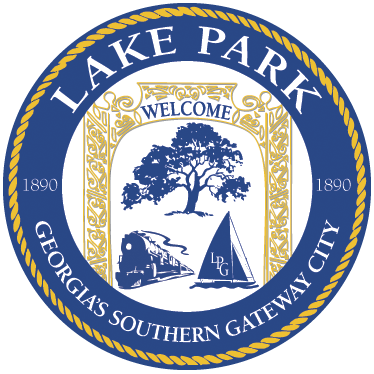Nestled in the gentle swells of south Georgia is the charming town of Lake Park in Lowndes County. Steeped in beauty and history where proverbial “moonlight and magnolias” enchant the senses.
First to enjoy the region were Native Americans who ceded Georgia territories to the United States through a succession of treaties. In 1825, Georgia’s General Assembly divided Irwin County to create a new county to the south. It would be named Lowndes in tribute to William J. Lowndes, a popular South Carolina statesman. Lowndes was also a presidential nominee, but he died during a sea voyage to England in 1822.
Settlers were eager to secure and begin working homesteads. Pioneer descendants Mrs. Faye Cook Wisenbaker recalls how the 490 acre parcels were distributed by “luck of the draw” from two barrels. One barrel held the settler’s names and the other contained the land lots. Names of lots were drawn and matched, and the new land owners were given nine years to pay their $8 deed fees.
Establishing a county seat would take decades. Franklinville was given the designation in 1827. In 1833 the county government was moved to Lowndesville, which was renamed Troupville in 1837 to salute Georgia Governor George Troup. In 1859, a 140 acre parcel four miles to the south was purchased from William Wisenbaker by a group of local citizens. This parcel was closer to the Atlantic & Gulf Railroad and opened the door to agricultural commerce.
This new city became the new Lowndes county seat. Valdosta was names after the governor’s home plantation, Val D’Osta, which means “Valley of Gold”. The 1840 census counted 6,200 residents in Lowndes County, that included the settler families of Christian Herman Dasher and William Wisenbaker’s son, James Wisenbaker. Cotton was a choice crop. Livestock, as well a variety of fruits, vegetables, grew well in the mild climate. Saw mills, grist mills, and general mercantile were available to meet the needs of the growing population.
But two decades that peace and prosperity was wiped out by the “War Between The States”. Thannie Smith Wisenbaker’s diary describes the hardships: “From 1863 to 1865 no stores were open for business”. Farming was hit hard as livestock and crops, especially cotton, were lost.
Railroads played a critical role in the area’s post war recovery. In addition to supply delivery the rails were a boon to employment as rail beds, tracks, and depots need to be constructed. More importantly the placement of train stops literally foretold a settlement’s future, whether it would flourish or wither. Farmer and landowner Lawrence Arthur Wisenbaker understood the value of the railroad. Just as William Wisenbaker had provided land for a new county seat in 1859, Lawrence deeded railroad right-of-way to the Georgia Southern and Florida Railroad in the 1880’s. Thus, Lake Park’s future was assured. The old Lake Park Cemetery marks the original location of the Lake Park Christian Church that had been organized in 1878. It was the first church in the community and it became a social and spiritual force to those living in the area.
Citizens earned extra income by selling lumber to the railroad to fuel the steam locomotives. Residents would put the wood in boxes along the track. Employees would empty the boxes and leave payments.
By 1890 the small town known as Twin Lakes changed its name to Lake Park. That same year the black population celebrated the newly built Francis Lake AME Baptist Church. A more modern building was built in 1899 on the plot of land where the church sits today.
Lake Park was a thriving community at the turn of the century. Industry included the Palmer Brothers’ Turpentine Still and Ewell brown’s Lake Park Manufacturing Company, which ginned cotton. Residents operated merchandise stores, a livery stable, law offices and a drug store. Peat moss was harvested from local wetlands and sold. The Lake Park Spanish Moss factory thrived as strands of the plentiful, silvery air plant became as popular as horsehair for stuffing upholstered furniture.
The Lake Park Ocean Pond Hunting and Fishing Club was established in 1903. It became so popular that the club remodeled and added a dining room in 1909. With the addition of a bathhouse and 12 new rooms in 1913, the Hunting Club became a favorite entertainment spot for the area’s young people.
Other ventures were not as fortunate. Like much of the south, Lake Park agriculture depended heavily on cotton. In 1915, the boll weevil struck. The area’s crop would not recover until the 1980’s.
Lake Park Christian Church decided that 1922 was opportune for a move. They decided to strap each corner of their steepled building to its own four wheeled dolly. A cable connected the two front and two rear dollies. A pair of cables were then lashed from the front of the church to a ‘skidder’, a rotating spool-like drum supported by a turntable sunk partially into the road. Single mule power turned the skidder. With each rotation the cable wound onto the skidder, which inched the structure gingerly on its journey.
